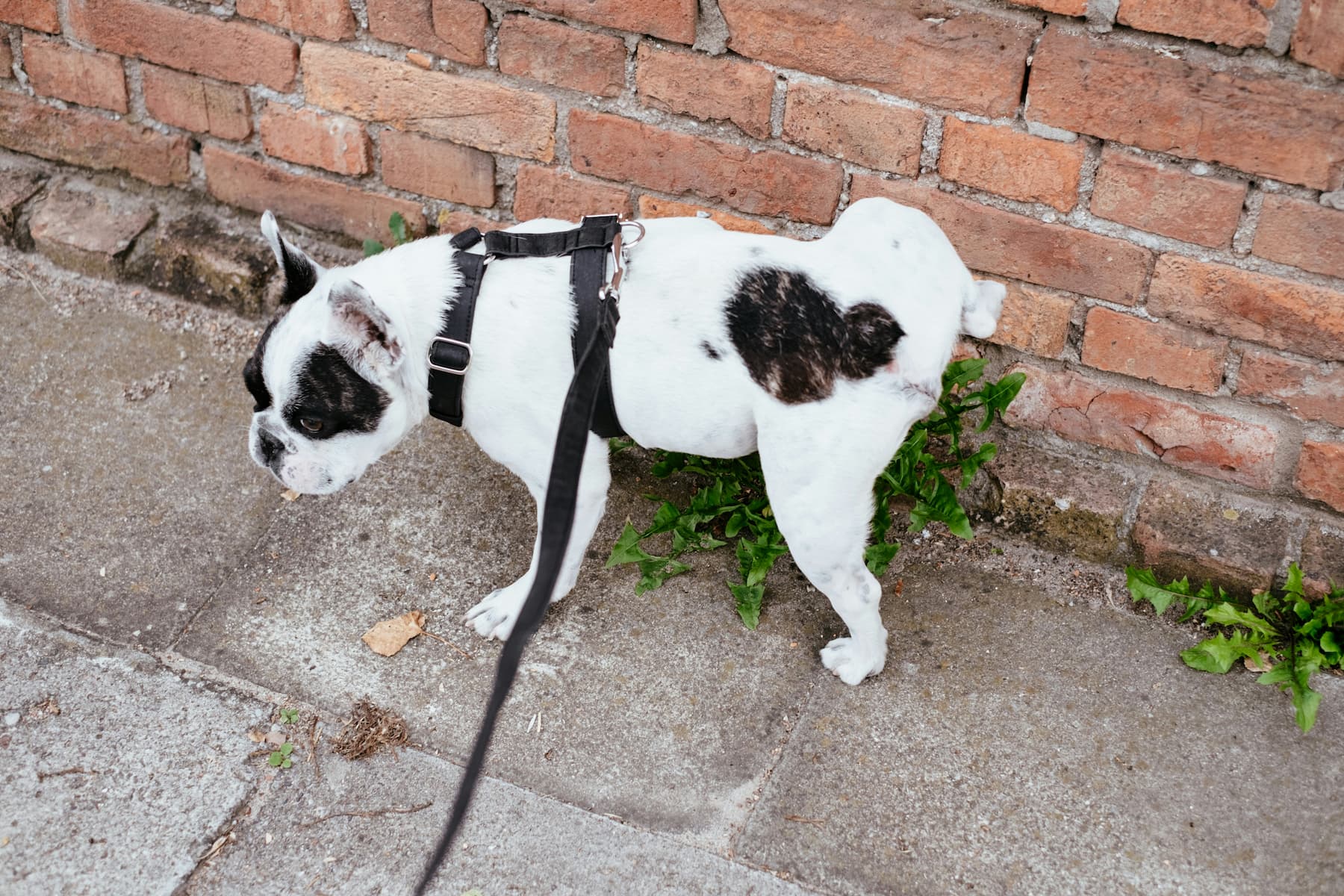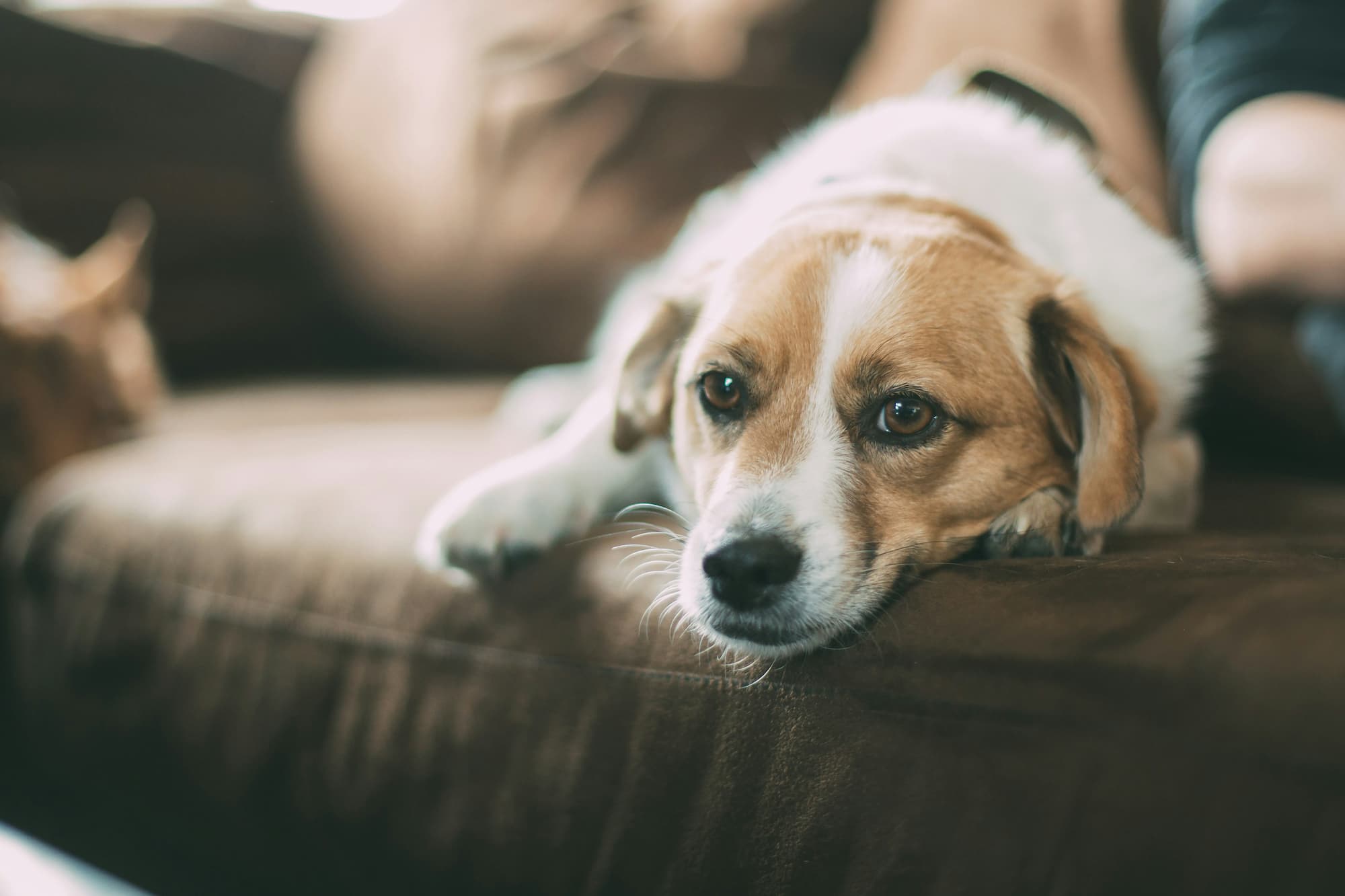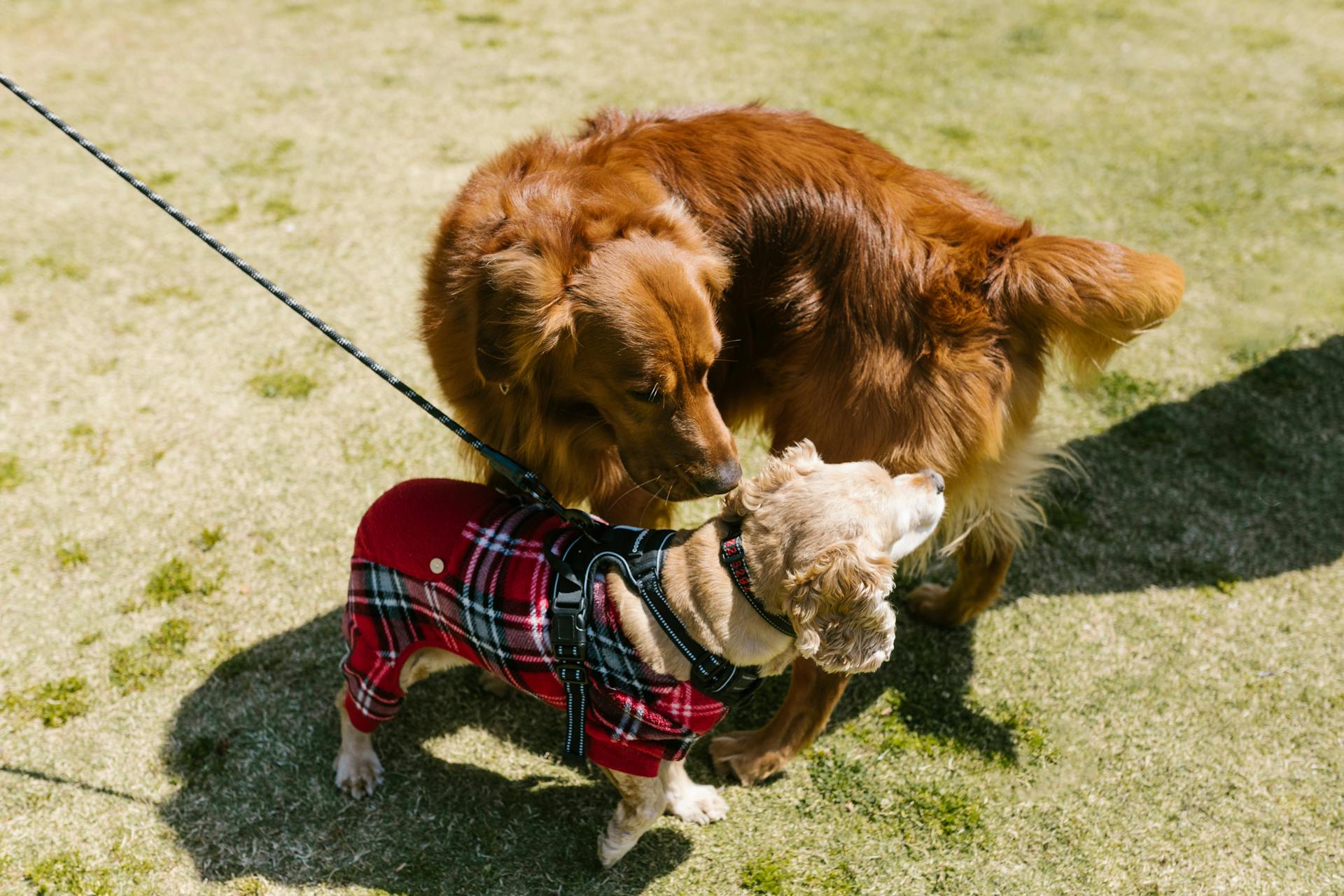Are you worried about your dog’s urine marking in public? As a dog owner, very few moments rival the mortification of realizing your pet has turned a vendor’s table at the farmer’s market or a perfectly arranged wedding flowerpot into his personal restroom.
Once people realize this, it’s the ultimate walk of shame as you scramble to apologize, clean up, and start wondering how much work it’ll take to train your dog the concept that some objects are sacred, no matter how tempting they are.
The good news? By following a few dog training tips and with little management, you can stop your dog from urine marking in public. But you must be consistent and take a step-by-step approach that shifts the dog’s focus from “Mark all the things!” to “Wow, sticking with my human is way more rewarding!”
It’s all about patience, practice, and making those tempting flowerpots and vendor tables less appealing than what’s in your treat bag.
Is It Reasonable to Expect a Dog to Stop Urine Marking in Public Places?
A dog owner asked me whether it’s reasonable to expect a dog—who has urine marked all his life—to stop urine marking when in public places. Well, the answer is yes; this goal is reasonable but with proper expectations.
Something we need to consider is that dogs are not instinctively wired to understand our own definitions of inside and outside rules when it comes to marking.
Things may become particularly confusing to dogs, especially when they are in environments that mix open-air settings with stimulating attractions such as farmers markets, fairs, outdoor shopping plazas, outdoor exhibits, and other crowded events.
Areas like these often offer a sensory overload of smells, people, and other dogs, which can trigger marking behavior—especially in male dogs.
Dogs may pee in these settings because of ingrained marking tendencies or simply expressing their emotional states, such as feelings of overstimulation, anxiety, or excitement.
The good news is that if we are consistent in our training, and use several management strategies, we can teach our dogs to generalize appropriate bathroom etiquette to these situations.

How Can I Stop My Dog from Urine Marking in Public Places?
One key element is to be proactive in managing the behavior to prevent it from happening, rather than relying on reactive corrections after the fact. With this key concept in mind, here are some general tips for success.
Train the “Go Potty” Cue
This is something that can help a lot in these cases because when we put a behavior on cue it becomes easier to control. Here is a guide on how to train this: how to train a dog to go potty on cue.
Empty the Tank
Before taking your dog to events such as farmers’ markets or festivals, make sure your dog is empty. Give him opportunities to go potty just prior to reaching these events. The go-potty cue can help with this.
Start Easy
Start with short visits to public places so that your dog can be desensitized gradually, and you can set him up for success. This will help build his comfort level and control in such environments.
Watch for Vertical Items
Most dogs will urine mark on vertical items such as tent poles, legs of a table, and any objects that stick out.
Keep it Short
Keep your dog on a short leash when walking around the private property. This will help you manage his proximity to the tempting targets.
Redirect as Needed
Be ready to redirect at the first sign of him trying to mark. You may need to train this at a fluent level before progressing to areas with distractions.
Helpful cues to train may include teaching your dog to dog make eye contact with you and training your dog to hand target.
An Ounce of Prevention
Even better, preempt rather than redirect. In other words, ask for these cues when you are walking by a tempting item so that you prevent him from making a mistake.
Go High Value
Remember to use high-value treats when he follows through these cues. Positive reinforcement training is essential in teaching a dog what not to do.
Change the Mindset
As the dog becomes responsive, I like to set up an area with tempting objects that scream “Mark me!”—think poles, planters, or cones—but the twist I like to add is that I rebrand them as “treat zones.”
Basically, I teach the dog that approaching these spots earns tasty rewards instead of pee points. The best part? Over time, your dog might glance at you eagerly in anticipation of a treat instead of lifting a leg.
Bonus: Dogs generally won’t potty where they eat, so you’re tapping into their natural instincts to help keep the area clean—win-win!
Don’t Make This Big Mistake!
Don’t make the big mistake of going too fast through the process. Exposing your dog to overwhelming environments where he’s likely to lose his cool can backfire. This will only allow him to rehearse the problem behavior, which makes it more difficult to address.
Therefore, start in chill spots like a quiet park or a cozy café patio when it’s less crowded. The best examples are places where distractions are minimal, and he can focus on being his best self. Slowly amp up the excitement over weeks or months, always rewarding his inner Zen.
If you need further tips for training, reach out to Ask a Trainer, and we will match your question with one of our experts best suited for your specific needs!




